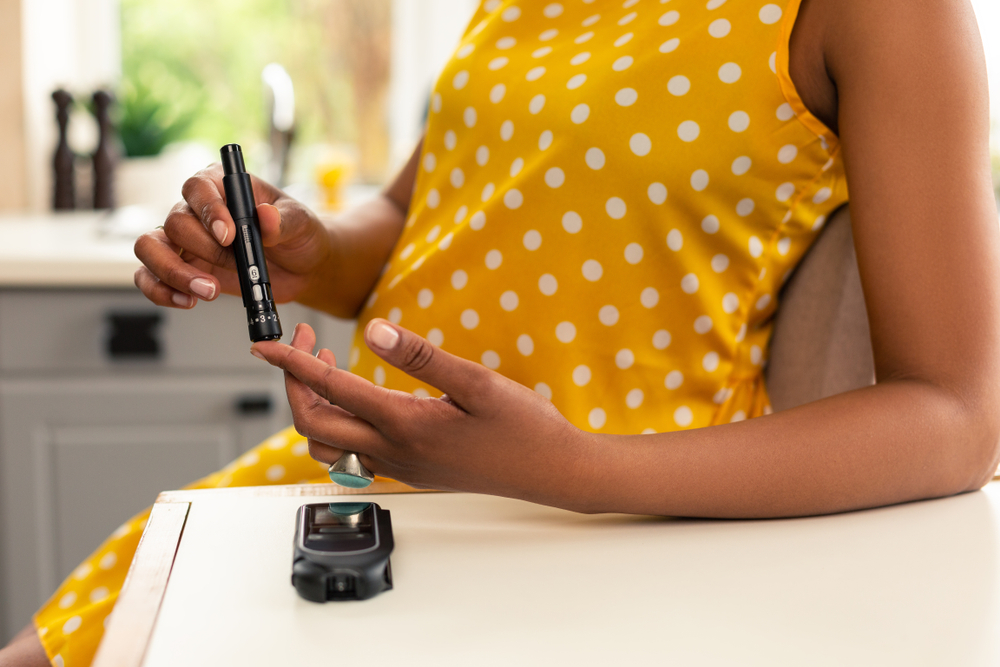Your morning coffee tastes perfect and life seems normal until suddenly, your hands start tingling or your knees feel unusually stiff. While these aches might seem random, they could be your body’s way of waving a red flag about blood sugar problems.
1. The mystery of tingling hands and feet
The first and most common sign often starts in the extremities. When blood sugar stays elevated for too long, it can damage the tiny blood vessels that feed your nerves. This damage creates a constellation of sensations that many describe as “pins and needles” or a burning feeling that often gets worse at night. The pain typically begins in the toes and fingertips, gradually climbing up through the feet and hands.
2. When joints rebel without reason
The second major pain signal shows up in your joints. Unlike typical arthritis that develops over time, blood sugar-related joint pain often appears more suddenly and without obvious cause. The pain tends to affect multiple joints at once, making simple tasks like typing on your phone or climbing stairs unexpectedly challenging. This happens because excess sugar molecules attach themselves to joint proteins, creating inflammation and stiffness that can make even young adults feel decades older.
3. The stomach pain puzzle
The third warning sign manifests as stomach discomfort that doesn’t follow the usual patterns of digestive issues. People often experience unexpected cramping or feelings of fullness even hours after eating. This occurs because high blood sugar can damage the nerves controlling digestion, leading to a condition where food moves too slowly through the digestive system.
4. The connection between sugar and headaches
The fourth signal comes in the form of headaches that don’t respond to typical pain relievers. Since the brain relies heavily on steady sugar levels for fuel, any significant fluctuations can trigger head pain. These headaches often feel different from regular tension headaches, sometimes accompanied by dizziness or blurred vision.
5. Nerve pain that comes and goes
The fifth pain signal manifests as unpredictable nerve pain that can strike anywhere in the body. Unlike the steady tingling in hands and feet, this pain often feels sharp and shooting, appearing suddenly in different locations. Some people report feeling it in their legs one day and their arms the next, making it particularly frustrating to manage.
Finding relief through lifestyle changes
The good news is that many people find significant relief through simple lifestyle adjustments. Regular movement, even just walking for 30 minutes daily, can help stabilize blood sugar levels and reduce pain. Small changes in eating habits, like having protein with every meal and spacing out carbohydrates throughout the day, often make a noticeable difference in pain levels.
Natural remedies showing real results
Recent findings point to several natural approaches that help manage blood sugar-related pain. Regular consumption of cinnamon, for example, has shown promising effects on maintaining steady blood sugar levels. Many people report significant improvement in their nerve pain after adding magnesium-rich foods like leafy greens, almonds, and avocados to their daily meals.
Fresh ginger, either as tea or added to meals, helps reduce inflammation that often accompanies blood sugar issues. Some individuals find relief from joint pain by incorporating turmeric into their cooking or taking it as a supplement under medical supervision.
Know when to call your doctor
While natural remedies can help, certain pain signals require immediate medical attention. Watch for sudden, severe pain accompanied by vision changes, extreme thirst, or confusion. These could indicate a serious blood sugar emergency. Also concerning are any new areas of numbness, especially if they develop rapidly, or cuts and bruises that take unusually long to heal.
Keep track of how often pain occurs and what makes it better or worse. This information helps healthcare providers adjust treatment plans more effectively. Many people find that keeping a simple pain diary on their phone provides valuable insights for their medical team.
The science behind sugar and pain
Recent research reveals how sugar molecules interact with pain receptors throughout the body. When blood sugar stays elevated, it triggers a cascade of inflammatory responses that sensitize nerve endings. This increased sensitivity makes people more susceptible to pain signals that their bodies might otherwise filter out.
Studies also show that blood sugar fluctuations can disrupt the body’s natural pain-management systems. This disruption helps explain why people with blood sugar issues often experience pain more intensely than others might under similar circumstances.
Daily habits that make a difference
Small changes in daily routines often yield surprising results in pain management. Starting the day with a protein-rich breakfast helps stabilize blood sugar levels throughout the morning. Taking short walks after meals, even just for five minutes, can significantly reduce post-meal blood sugar spikes that often trigger pain.
Stress management plays a crucial role too. High stress levels can elevate blood sugar and increase pain sensitivity. Simple breathing exercises or brief meditation sessions, especially before bed, help many people maintain more stable blood sugar levels overnight.
Supplements and treatments worth considering
While diet and exercise form the foundation of blood sugar management, certain supplements show promise in supporting pain relief efforts. Alpha-lipoic acid, for instance, helps protect nerve tissue from sugar-related damage. B-complex vitamins support overall nerve health and function.
However, not all supplements work the same way for everyone. Some people find relief with evening primrose oil, while others respond better to fish oil supplements. Working with a healthcare provider helps identify the most effective combination for individual needs.
Common myths about blood sugar and pain
Many people believe that blood sugar only affects those with diabetes, but research shows that even slightly elevated levels can trigger pain responses in otherwise healthy individuals. Another common misconception is that sugar-related pain only occurs in older adults. In reality, younger people increasingly report these symptoms, often due to modern dietary habits.
Some think that eliminating all carbohydrates provides the best solution for blood sugar-related pain. However, extreme dietary restrictions often backfire, leading to unstable blood sugar levels that can worsen pain symptoms.
Future hope for better pain management
Medical researchers continue developing new approaches to managing blood sugar-related pain. Emerging treatments focus on protecting nerve tissue from damage while supporting the body’s natural repair mechanisms. Some promising studies explore how specific proteins might prevent or reverse nerve damage caused by elevated blood sugar.
Wearable technology also offers new hope for better pain management. New devices that continuously monitor blood sugar levels can help people identify and prevent pain-triggering spikes before they occur.
Creating your personal pain management plan
Effective pain management usually requires a personalized approach. Start by identifying your most troublesome symptoms and tracking them alongside your daily activities. Notice patterns between what you eat, how you move, and when pain occurs.
Consider working with a healthcare team that includes not only your primary doctor but also a nutritionist and physical therapist. This comprehensive approach often provides the most effective relief from blood sugar-related pain.
Remember that improvement takes time, and small, consistent changes often yield better results than dramatic overhauls that prove difficult to maintain. Focus on progress rather than perfection, celebrating each small victory in your journey toward better health and less pain.
The key to managing blood sugar-related pain lies in understanding its unique characteristics and responding with a combination of medical guidance, lifestyle adjustments, and consistent self-care practices. While the journey might seem challenging, many people find that their efforts lead not just to pain relief but to better overall health and enhanced quality of life.
















